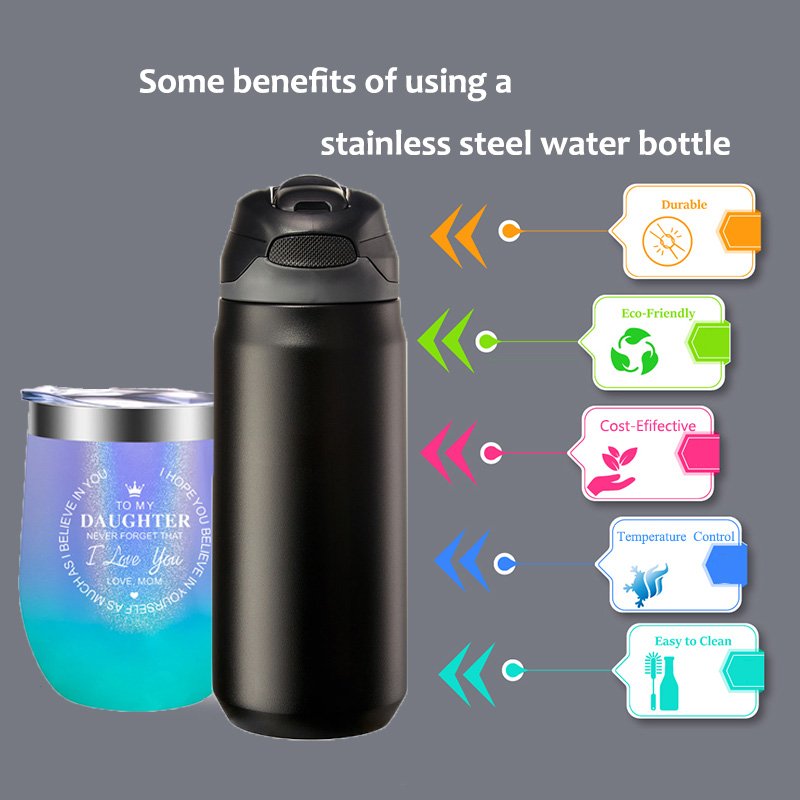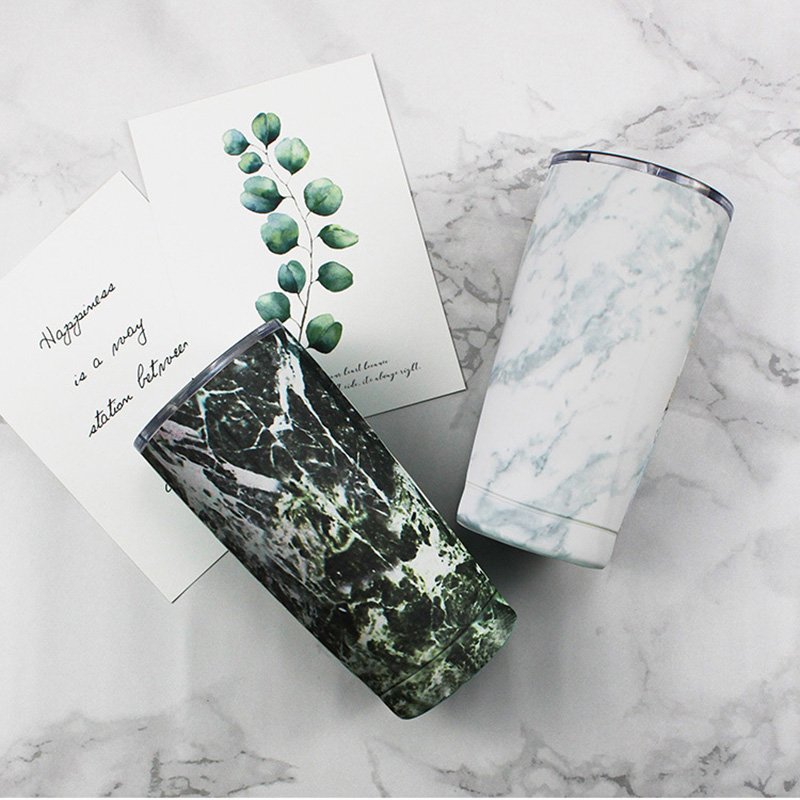The resurgence of ceramic water bottles marks a significant shift in consumer preferences, reflecting a broader movement towards sustainable and health-conscious living. Historically, ceramic vessels were commonplace in households worldwide, prized for their durability and ability to maintain the temperature of liquids. Over time, however, they were largely supplanted by more convenient, mass-produced plastic and metal alternatives. Today, ceramic water bottles are experiencing a renaissance, driven by a confluence of environmental, health, and aesthetic considerations.
Environmental concerns are a leading factor behind this revival. As awareness of plastic pollution grows, consumers are seeking alternatives that reduce their ecological footprint. Ceramic, being a natural, non-toxic material, offers a sustainable option that contrasts sharply with the disposability and environmental impact of plastic bottles. Moreover, ceramic bottles do not leach harmful chemicals into their contents, a notable advantage over some plastic and metal containers, which can release toxins under certain conditions.
Health considerations also play a crucial role in the renewed interest in ceramic water bottles. With increasing attention to the materials that come into contact with food and beverages, consumers are prioritizing options that ensure purity and safety. Ceramic bottles, often crafted from high-quality, food-grade materials, provide a reassuring alternative to plastic, which can harbor bacteria and degrade over time. The inherent properties of ceramic, such as its ability to retain freshness and resist odor absorption, further enhance its appeal.
Aesthetic appeal cannot be overlooked in discussing the comeback of ceramic water bottles. The distinct, artisanal quality of ceramic appeals to those who appreciate craftsmanship and design. Unlike the uniformity of plastic and metal bottles, ceramic vessels offer a unique, visually pleasing experience. They can be customized with intricate patterns, glazes, and finishes, making each bottle a personal statement as well as a functional item.
In summary, the renaissance of ceramic water bottles is a multi-faceted phenomenon. It reflects a growing desire for sustainable, health-conscious, and aesthetically pleasing alternatives to conventional options. This trend underscores a broader shift towards mindful consumption and an appreciation for materials that harmonize with both our health and the environment.
Advantages of Using Ceramic Water Bottles
Ceramic water bottles offer a plethora of benefits that make them a superior choice compared to bottles made from other materials. One of the most significant advantages is their non-toxic nature. Unlike plastic bottles, which often contain harmful chemicals like BPA and phthalates, ceramic is a naturally inert material. This means that it does not leach any chemicals into the water, ensuring that what you drink is pure and safe.
Another notable benefit is the ability of ceramic bottles to keep water cool for longer periods. Due to their thermal insulating properties, ceramic water bottles maintain the temperature of the liquid, providing a refreshing drink even hours after filling. This is particularly advantageous in hot climates or during outdoor activities.
Durability is another key advantage. Ceramic water bottles are designed to withstand the test of time. While they may be more fragile than metal, they are far more resilient than one might think. High-quality ceramic undergoes a firing process that enhances its strength, making it resistant to cracking and chipping under normal usage conditions.
In terms of sustainability, ceramic is an eco-friendly material. It is derived from natural clay, which is abundant and has a minimal environmental footprint. Unlike plastic bottles, which contribute significantly to pollution and landfill waste, ceramic bottles can be recycled and even repurposed at the end of their lifecycle. This makes them an excellent choice for environmentally conscious consumers.
Real-life testimonials and expert opinions further bolster the case for ceramic water bottles. Many users report a noticeable difference in the taste of the water, attributing it to the absence of any metallic or plastic aftertaste. Experts in environmental science and health also advocate for the use of ceramic, highlighting its numerous health and ecological benefits.
In summary, the advantages of ceramic water bottles—ranging from their non-toxic nature and superior cooling capabilities to their durability and eco-friendliness—make them a compelling choice for anyone looking to enhance their hydration habits. As more individuals become aware of these benefits, the appeal of ceramic water bottles continues to grow.
Design and Innovation in Modern Ceramic Bottles
In recent years, the design and innovation of ceramic water bottles have seen significant advancements, blending form with functionality to meet the demands of modern consumers. Ergonomically designed for ease of use, these bottles often feature contours and grips that make them comfortable to hold and carry. The seamless integration of stylish aesthetics ensures that these bottles are not only practical but also visually appealing, making them a fashionable accessory for everyday use.
Technological advancements have further enhanced the functionality of ceramic water bottles. Features such as spill-proof lids and easy-to-clean surfaces are now standard, ensuring that these bottles are not only convenient but also hygienic. The adoption of high-quality glazing techniques has made it possible for ceramic bottles to be more durable and resistant to chipping and staining, extending their lifespan and maintaining their appearance over time.
Collaborations with artists and designers have played a crucial role in elevating the aesthetic appeal of ceramic water bottles. These partnerships have resulted in unique, limited-edition designs that transform everyday hydration into a form of personal expression. Brands like Soma and Ello have been at the forefront of this trend, offering a range of ceramic water bottles that combine artistic flair with cutting-edge functionality.
For instance, Soma’s ceramic bottles boast sleek, minimalist designs paired with bamboo caps and silicone sleeves, merging sustainability with style. Ello, on the other hand, offers vibrant, patterned bottles that cater to a variety of tastes, ensuring that there is a ceramic bottle to suit everyone’s preference. These brands demonstrate how modern ceramic water bottles can be both a practical hydration solution and a statement piece.
Overall, the contemporary design and innovation in ceramic water bottles reflect a perfect blend of aesthetic beauty and practical functionality. As these bottles continue to evolve, they are poised to become an essential part of our daily lives, offering a sustainable and stylish alternative to traditional hydration options.
The Future of Ceramic Water Bottles in the Hydration Market
As the global landscape shifts towards sustainability and eco-conscious consumerism, ceramic water bottles are poised to play a significant role in the hydration market. Current trends indicate a growing appreciation for environmentally friendly products, driven by an increasing awareness of the detrimental effects of plastic pollution. Consumers are actively seeking alternatives that offer both functionality and ecological benefits, and ceramic water bottles are emerging as a promising solution.
In the realm of consumer preferences, there is a noticeable shift towards products that are not only durable but also aesthetically pleasing. Ceramic water bottles, with their elegant designs and customizable features, cater to this demand. Unlike their plastic counterparts, ceramic bottles do not leach harmful chemicals, ensuring that the water remains pure and safe for consumption. This quality, coupled with their thermal insulation properties, makes ceramic bottles an attractive choice for health-conscious individuals.
The environmental movement has significantly bolstered the popularity of ceramic water bottles. As more people become aware of the importance of reducing single-use plastics, the adoption of reusable bottles is on the rise. Ceramic, being a natural and recyclable material, aligns perfectly with the principles of sustainability. Additionally, advancements in ceramic technology are paving the way for innovative features such as enhanced durability, lighter weight, and improved thermal retention, making ceramic water bottles even more competitive.
Looking ahead, the potential for growth in the ceramic water bottle market is substantial. Technological advancements are likely to introduce new functionalities, such as smart hydration tracking and self-cleaning capabilities, further enhancing their appeal. As consumers continue to prioritize sustainability, ceramic water bottles are expected to become a staple in households and workplaces, contributing to a greener future.
In light of these trends, it is imperative for consumers to consider making the switch to ceramic water bottles. By choosing ceramic, individuals can support environmental sustainability, enjoy the benefits of a healthier hydration option, and embrace a product that combines practicality with style. The ceramic water bottle renaissance is not just a trend; it is a movement towards a more conscious and responsible way of living.




заработок на аккаунтах https://marketplace-akkauntov-top.ru
безопасная сделка аккаунтов маркетплейс для реселлеров
гарантия при продаже аккаунтов продать аккаунт
услуги по продаже аккаунтов https://prodat-akkaunt-online.ru
услуги по продаже аккаунтов маркетплейс аккаунтов
продажа аккаунтов маркетплейс аккаунтов соцсетей
Account Buying Platform Ready-Made Accounts for Sale
Purchase Ready-Made Accounts Sell Pre-made Account
Secure Account Purchasing Platform Buy Account
Accounts market buyaccountsmarketplace.com
Account trading platform Account Buying Platform
Account Sale socialaccountsstore.com
Find Accounts for Sale Account Store
Profitable Account Sales Account Buying Service
Account Purchase Online Account Store
Social media account marketplace Website for Selling Accounts
marketplace for ready-made accounts account marketplace
profitable account sales account exchange service
account selling platform secure account purchasing platform
account selling platform guaranteed accounts
account purchase website for selling accounts
buy and sell accounts account selling service
account exchange account market
gaming account marketplace accountsmarketdiscount.com
secure account sales gaming account marketplace
account exchange service sell accounts
accounts market account acquisition
buy pre-made account account catalog
account exchange service sell accounts
buy accounts sell accounts
sell pre-made account account buying platform
account store account sale
social media account marketplace guaranteed accounts
account purchase buy account
buy accounts online account store
marketplace for ready-made accounts account catalog
account market account market
accounts for sale gaming account marketplace
account catalog https://sale-social-accounts.org
ready-made accounts for sale buy accounts
account exchange service account store
buy account https://top-social-accounts.org/
account acquisition sell account
profitable account sales https://accounts-offer.org/
account trading platform https://accounts-marketplace.xyz/
buy accounts social-accounts-marketplaces.live
account buying platform https://accounts-marketplace.live
find accounts for sale https://social-accounts-marketplace.xyz
verified accounts for sale https://buy-accounts.space/
account acquisition buy accounts
ready-made accounts for sale buy accounts
profitable account sales https://accounts-marketplace.online
buy accounts account marketplace
маркетплейс аккаунтов akkaunty-na-prodazhu.pro
биржа аккаунтов https://rynok-akkauntov.top
магазин аккаунтов https://kupit-akkaunt.xyz
площадка для продажи аккаунтов akkaunt-magazin.online
магазин аккаунтов akkaunty-market.live
маркетплейс аккаунтов kupit-akkaunty-market.xyz
продать аккаунт https://akkaunty-optom.live/
маркетплейс аккаунтов соцсетей online-akkaunty-magazin.xyz
продажа аккаунтов https://akkaunty-dlya-prodazhi.pro/
продажа аккаунтов купить аккаунт
buy facebook profiles buy aged fb account
buy fb account https://buy-ad-accounts.click
buy facebook accounts https://buy-ad-account.top
facebook accounts to buy https://buy-ads-account.click
buy fb ad account https://ad-account-buy.top/
facebook account sale https://buy-ads-account.work
buy fb ad account facebook ads account buy
Этот информационный обзор станет отличным путеводителем по актуальным темам, объединяющим важные факты и мнения экспертов. Мы исследуем ключевые идеи и представляем их в доступной форме для более глубокого понимания. Читайте, чтобы оставаться в курсе событий!
Получить дополнительные сведения – https://medalkoblog.ru/
buy facebook ads manager facebook ads account buy
facebook ad account for sale facebook account buy
google ads agency account buy https://buy-ads-account.top
google ads account seller https://buy-ads-accounts.click
buying facebook accounts https://buy-accounts.click/
buy google ads threshold account buy google ads invoice account
buy verified google ads account https://ads-account-buy.work
buy google adwords account https://buy-ads-invoice-account.top
buy verified google ads account google ads reseller
buy google ads threshold account https://buy-ads-agency-account.top
buy google ad account https://sell-ads-account.click
buy google ads agency account https://ads-agency-account-buy.click
facebook business manager buy buy-business-manager.org
buy google adwords account https://buy-verified-ads-account.work/
fb bussiness manager https://buy-bm-account.org/
buy facebook bm account https://buy-verified-business-manager-account.org
buy facebook business manager account https://buy-verified-business-manager.org
buy verified business manager https://buy-business-manager-acc.org
facebook business manager buy facebook business account for sale
facebook verified business manager for sale facebook bm for sale
business manager for sale buy-bm.org
buy facebook business manager accounts https://buy-business-manager-accounts.org
tiktok agency account for sale https://buy-tiktok-ads-account.org
buy tiktok ads https://tiktok-ads-account-buy.org
buy tiktok ads https://tiktok-ads-account-for-sale.org
tiktok ads account for sale https://tiktok-agency-account-for-sale.org
tiktok ads account buy https://buy-tiktok-ad-account.org
tiktok ads account buy https://buy-tiktok-ads-accounts.org
tiktok ads account for sale https://tiktok-ads-agency-account.org
buy tiktok ad account https://buy-tiktok-business-account.org
buy tiktok ads https://buy-tiktok-ads.org
buy facebook advertising accounts sell accounts account trading platform
buying facebook accounts buy and sell accounts secure account purchasing platform
Ein bedeutender Vorteil der Online Casinos ohne
Verifizierung ist, dass ihr schneller Geld ins Casino einzahlen und spielen könnt, als in Casinos möglich ist, die eine Verifikation zur
Spielfreigabe durchführen müssen. Dort könnt ihr sicher spielen, sofern eine gültige Lizenz vorgewiesen werden kann.
Spieler, die sich für Onlinecasinos ohne Identitätskontrolle entscheiden, schätzen besonders die Anonymität bei Ein- und Auszahlungen. Deshalb
solltet ihr euch immer über die Regeln innerhalb eures Landes bewusst sein, um bei einem legalen Online Casino zu spielen, welches die Sicherheit
eures Geldes und eurer persönlichen Daten gewährleisten kann.
Mit beeindruckenden Auszahlungsquoten von 97,08% bis 97,88% bieten diese Casinos nicht nur schnelle Transaktionen, sondern auch faire Gewinnchancen. Diese schnelle Bearbeitung macht Online Casinos ohne Verifizierung mit Sofortauszahlung besonders attraktiv für Spieler, die Wert
auf Effizienz legen. Ob Sie sich für ein Paysafecard Casino
ohne Verifizierung entscheiden oder in Richtung Kreditkarte gehen – beide bieten Vorteile in Bezug auf Geschwindigkeit und
Anonymität. Die Paysafecard ist eine der beliebtesten Zahlungsmethoden in solchen Casinos, da sie sofortige Transaktionen ermöglicht und maximale Privatsphäre gewährleistet.
Online Casinos ohne Verifizierung bieten verschiedene Zahlungsmethoden an, die schnelle und anonyme Transaktionen ermöglichen.
References:
https://online-spielhallen.de/umfassender-ratgeber-zur-jet-casino-auszahlung/